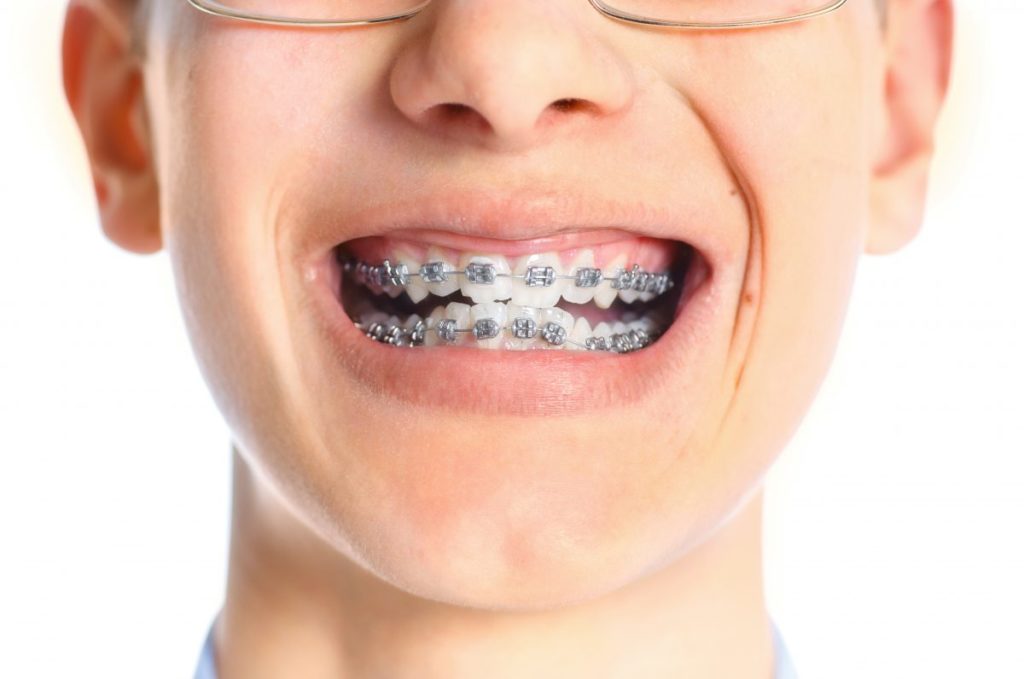Orthodontics might seem like a relatively more modern field of medicine, but the desire for straighter teeth has been around since ancient times. And even in ancient times, they were trying to invent devices to improve the positioning of teeth. Here is a brief history of orthodontics:
Ancient Greece and Rome
The history of orthodontics starts back in ancient Greece and Rome. Aristotle and Hippocrates had knocked around ideas for straightening teeth even as far back as 400 and 300 BC and archaeologists have proof that the Etruscans used appliances to maintain spaces and prevent collapses of teeth because they buried their dead wearing them. Also in a Roman tomb a dental device was found along with documentation on how to use it.
18th Century France
Pierre Fauchard, a French dentist in the 18th century who is considered the father of modern dentistry, wrote a book in 1728 about methods for straightening teeth. He also was known to use a device called “bandeau” to widen the upper palate. A few years later in 1754 another dentist Louis Bourdet published his own book where he suggested improvements to the bandeau. He is also considered the first dentist to pull bicuspids to reduce tooth crowding.
19th Century
It wasn’t until the 19th century though that Orthodontics as a separate dental specialty was defined. The term orthodontia was first used in 1841 by Joachim Lafoulon. In 1819 the first wire crib was used and this is the time that materials like precious metals, steel, gum rubber and vulcanite were used to create loops, hooks, spurs and ligatures to straighten teeth.
In addition, the first gum elastics were used by Edward Maynard in 1843 and E.J. Tucker first used rubber bands for braces in 1850.
20th Century
Edward Angle founded in the American Society of Orthodontia in 1901, which was renamed the American Association of Orthodontists in the 1930s. Angle also developed the first classification system for malocclusions.
By the 1960s gold was a popular material choice for braces. Before the 1970s, braces were wrapped around the teeth, but by the mid-70s, orthodontist began directly adhering the brackets to the teeth, and lingual braces where the braces are adhered to the back of the teeth were started to be used a lot.
Orthodontics Today
With all the advances in technology today, the field of orthodontics has grown in leaps and bounds in the last twenty years. We know have digital x-rays and 3D dental imaging which are better quality and allow orthodontists to get a more detailed look at the structure of the mouth. And because they are digital, orthodontists can gain immediate access to the images.
There is also the i-Cat Cone Beam 3D Dental Imaging System which can provide a full set of x-rays in one 360 degree scan and create 3D images of the teeth. Another plus is that there is less radiation with this type of x-rays.
Creating the braces has also gotten a lot of easier. The iTero scanner for Digital Impressions allows orthodontists to create the teeth impressions digitally instead of manually. They simply scan the patient’s mouth and then they can view the impressions on the computer just a few minutes later. In addition digital impressions are more accurate reducing the number of fit issues with the braces.
In addition CAD/CAM and robotic wire bending technology used in combination with digital scanner allows the orthodontist to more précising position the brackets and wires, especially with lingual braces where are adhered to the backs of the teeth.
Even with the types of braces there are so many more options today. Metal braces adhered to the front of the teeth is still the most common treatment, but for people who are concerned about the braces being noticeable, there are other options like lingual braces, ceramic braces and Invisalign aligners.
Here is what is available today….
Metal braces
- These are permanently adhered to your teeth and can only be taken off by the orthodontist at the end of treatment
- The orthodontist tightens the wires during treatment to help shift the teeth
- There are certain food and drink restrictions with this treatment
- May have to wear them for 3 or more years depending on how your treatment goes
- Most bite and alignment issues can be treated by metal braces
Invisalign
- They are clear plastic aligners that can be easily removed
- Can be removed to eat and to brush and floss your teeth
- Treatment includes a new set of aligners every two weeks as your teeth shift into proper alignment
- Invisalign can also handle both simple and complicated alignment issues
Ceramic Braces
- These braces are made of ceramic which blends into your teeth better and are invisible.
- In all other ways though these braces are like the metal ones. You still have food and drink restrictions and will need the wires tightened as the teeth shift.
- Most bite and alignment issues can be treated by ceramic braces.
Lingual Braces
- Lingual braces are attached to the back of the teeth to make them more invisible.
- They can be a little harder to adjust to and can cause speech difficulties at first.
- You need to be extra diligent with oral hygiene because it can be harder to clean the backs of the teeth where the brackets are.
Six Month Smiles
- With Six Month Smiles, clear braces are put on only a few teeth so treatment takes less time.
- This treatment though focuses more on appearances than function and structure. If you have serious bite and alignment issues this method won’t correct it.
Why choose Orthodontics Limited?
Drs. Pale, Gemmi and Middleberg know what a big difference a straighter smile can make in a person’s life. Not only does it help restore self-confidence, it makes it easier to practice proper oral hygiene so you have a healthy, beautiful smile for years to come. The staff at Orthodontics Limited also understand that each person’s situation is different so that is why they take the time to sit down with you and go over your options. They will create the best treatment plan for your particular needs.
Maintaining your oral health is important so Orthodontics Limited will work with you to come up with an affordable plan. The staff at Orthodontics Limited is also very compassionate and friendly and will always greet you with a smile giving you comfort and peace of mind a priority during your visits to the office.
Call Orthodontics Limited today for a free initial consultation and to learn more about the history of orthodontics.



